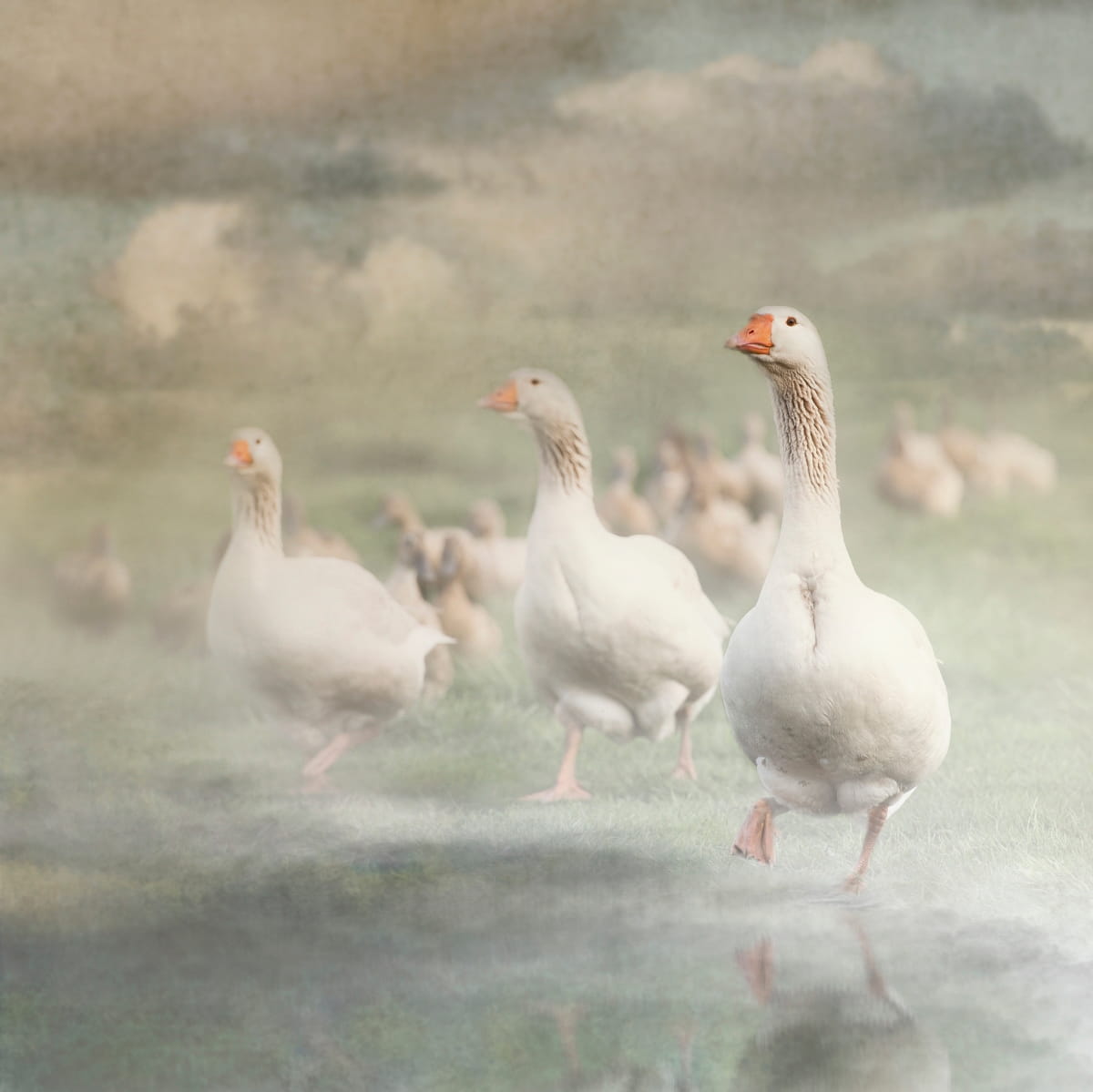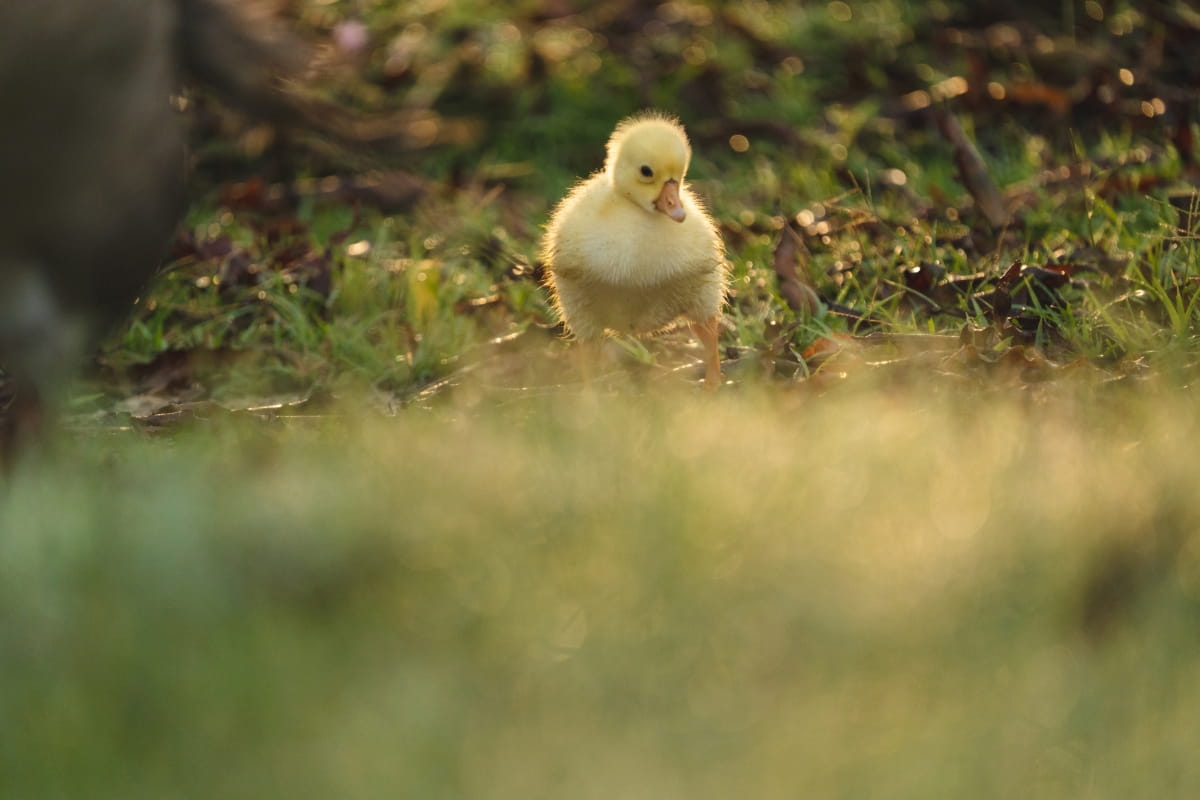Known for its unique characteristics and versatility, the American Buff goose is a domestic goose breed from the United States. This article provides an overview of the American Buff Goose, including its origin, characteristics, life span, price, egg production, size, pros, and cons.

Origin of the American Buff Goose
American Buff geese originated in North America and descended from wild Graylag geese native to northern Asia and Europe. The geese breed is believed to have evolved from a buff mutation in gray geese flocks or buff-colored stock imported from Europe. This breed is listed as critical and rare on the American Livestock Breeds Conservancy’s conservation priority list. For the first time in 1947, the American Poultry Association recognized these geese breeds, making them a desirable breed for egg and meat production.
Characteristics of the American Buff Goose
The name ‘American Buff goose’ comes from the color of the breed’s body. This breed is characterized primarily by its temperament, which makes it a good choice for farmers seeking an easygoing breed to produce meat and eggs. They make good parents, which benefits farmers who want to improve their stock and increase production by breeding their geese.
As a result of their good behavior, they can be used for a wide variety of purposes beyond agriculture. Due to their excellent parental abilities, they can raise and care for other abandoned goslings. The average weight of a mature American Buff gander is around 9 kg, and they are slightly larger than females, which weigh between 7.5 and 8 kg. A medium-sized poultry breed, they have a lovely coloration that many find attractive.
Price Range of American Buff Geese
American Buff Geese’s price range may differ depending on factors like age, health, and location. On average, you can expect to pay between $20 and $50 for goslings, while young adults may range from $50 to $100. Breeding pairs or mature geese can cost anywhere from $100 to $200. The prices may fluctuate based on demand and availability. Transportation costs should also be considered when purchasing geese from distant locations.
Egg Production of American Buff Geese
The American Buff goose is well known for its excellent parenting skills and careful attention to its young. The goose will lay between 10 and 20 eggs and be incubated for 28 to 34 days. Due to their broody nature, these geese might be a good surrogate for the eggs of other geese breeds. They are also known for their strong maternal instincts and are attentive to their eggs, ensuring they are safe and warm. Raising American Buff Geese for egg production is a popular choice due to their exceptional egg-laying ability.
In case you missed it: Embden Goose Breed: Physical Characteristics, Egg Production, Breeding, and Feed Requirement

Size of American Buff Goose
It belongs to the medium-weight class of geese and is the largest breed in this class. This breed’s mature ganders, or male geese, can weigh up to 9 kg. On the other hand, mature geese, or female geese, typically weigh around 8 kg. These weight measurements highlight the substantial size of the American Buff Goose compared to other goose breeds. With their impressive weight, American Buff Geese make a striking presence and are highly valued in poultry farming.
Pros of Raising American Buff Geese
Firstly, these geese are known for their attractive and friendly nature, making them a delightful addition to any farm or homestead. Their calm and docile temperament adds to their appeal, making them easy to handle and interact with. American Buff Geese are excellent foragers and can assist in weed control.
They have an instinct to graze on grass and weeds, which can help maintain a well-manicured lawn or pasture. It can save your time and effort in manual weed removal. Their meat is flavorful and sought after, making them a desirable choice for those interested in farm-to-table eating.
Cons of Raising American Buff Geese
One of the primary concerns when it comes to raising American Buff Geese is the need for adequate space and housing. These geese require ample room to roam and graze, as they are active birds. They need access to water for swimming and foraging, which means a suitable pond or similar water source is necessary. Additionally, they require secure and comfortable housing to save them from predators and harsh weather conditions.
Another drawback of raising American Buff Geese is the potential for noise and mess. These geese are quite vocal, especially during the breeding season. Their honking can be loud and disruptive, which may not be suitable for some residential areas. They should be monitored for any signs of illness or disease, as they can be susceptible to various health issues.
Breeding and Reproduction of American Buff Geese
Breeding and reproduction are essential aspects of maintaining a healthy population of American Buff Geese. These geese are known for their striking appearance, buff-colored feathers, and distinctive head shape. Breeding typically occurs in the spring, when the geese establish pairs and build nests in a secure location.
The female produces a clutch of eggs, usually between 5 and 10, which both parents take turns incubating. After an incubation period of approximately 28 days, the eggs hatch, and the goslings are cared for by their parents. The successful breeding and reproduction of American Buff Geese ensure the continuation of this beautiful species.
Feeding and Care Requirements for American Buff Geese
- When it comes to their diet, Buff Geese should be provided with a balanced ration of poultry feed, which typically consists of grains, corn, and soybean meal.
- Additionally, they should always have a continuous supply of fresh, clean water.
- Buff Geese are grazers and benefit from having access to pasture or grassy areas to forage.
- As for their care, a secure and spacious shelter is necessary, with adequate ventilation and protection from predators.
- Regular health check-ups and vaccinations are also essential to ensure their well-being.
Common Diseases in American Buff Geese
- One prevalent disease is avian influenza, which can cause respiratory problems and death.
- Another common ailment is botulism, a bacterial infection. It affects the nervous system and can be fatal.
- Gastrointestinal infections, such as enteritis and coccidiosis, can cause diarrhea, weight loss, and reduced egg production.
- Parasitic infestations, like mites and worms, can also occur in American Buff Geese, leading to discomfort and decreased overall well-being.
- Proper sanitation, vaccination, and regular veterinary check-ups are essential for preventing and managing these diseases.
In case you missed it: Safeguard Your Flock: Raising Geese to Protect Chickens

Conclusion
The American Buff Goose is a distinct breed originating from North America. It possesses several desirable characteristics, such as its calm temperament and moderate egg production. While there are pros to raising American Buff Geese, such as their foraging ability and flavorful meat, there are also some considerations to be aware of, including their size and noise level. However, with proper care and suitable living conditions, they can be a valuable addition to a farm or backyard flock.
- Feed Your Flock for Less: Top 10 Tips to Save on Chicken Feed
- Ultimate Guide to Ossabaw Island Hog: Breeding, Raising, Diet, and Care
- Hatching Answers: The Top 10 Reasons Your Chickens Aren’t Laying Eggs
- Eggs and Economics: Breaking Down the Cost of Raising Backyard Chickens
- Defend Your Greens: Proven Methods to Keep Iguanas Out of Your Garden
- Ultimate Guide to Cinnamon Queen Chicken: A Comprehensive Guide for Beginners
- Ultimate Guide to California Tan Chicken: Breeding, Raising, Diet, Egg-Production and Care
- Ultimate Guide to Marsh Daisy Chicken: Breeding, Raising, Diet, and Care
- 10 Types of Chicken Farming Businesses You Can Start for Profits